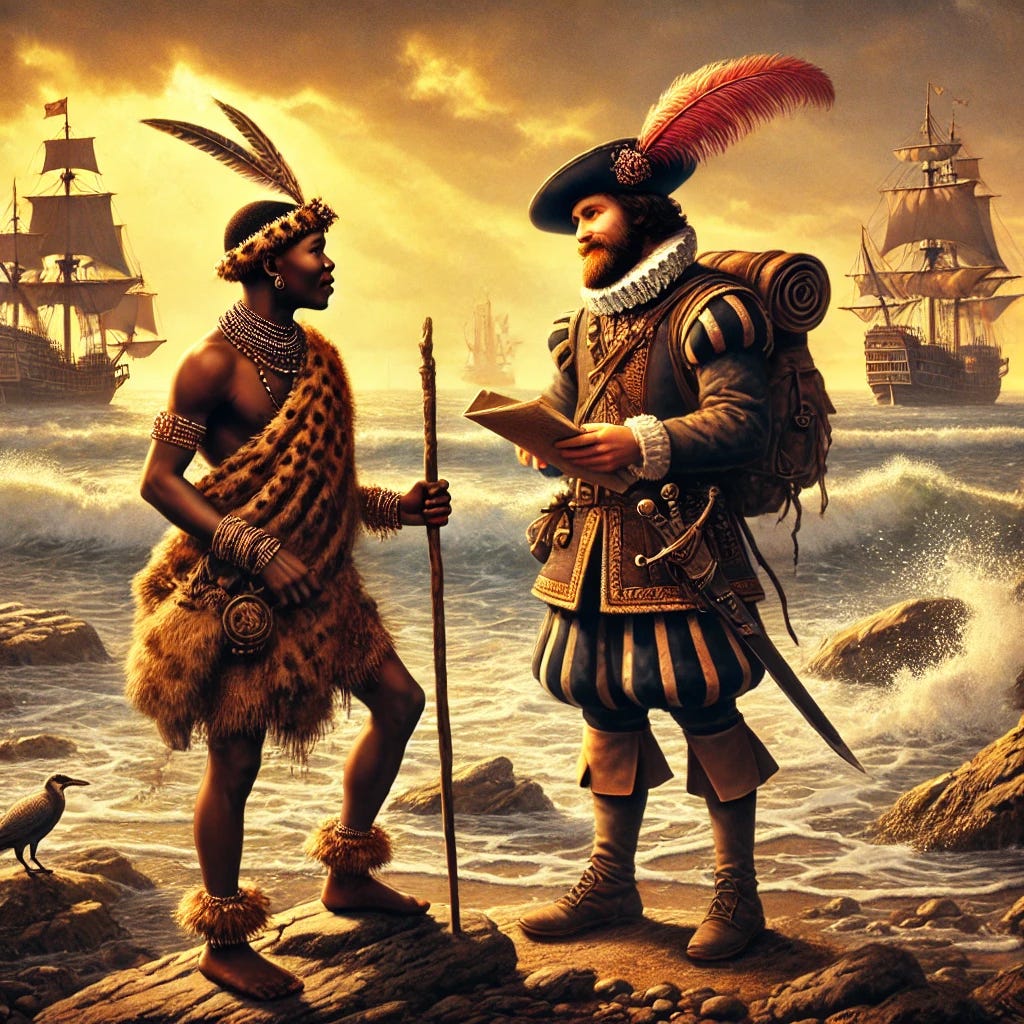The Doctrine of Discovery refers to a set of papal bulls issued by the Catholic Church in the late 15th century, most notably in 1493 by Pope Alexander VI.
These decrees, including Inter Caetera, were rooted in the idea that Christian European nations had a divine right to claim and govern lands inhabited by non-Christian peoples.
The doctrine emerged during the Age of Exploration, when European powers like Spain and Portugal were expanding their empires, and it provided a legal and moral framework for colonization.
Key Elements of the Doctrine of Discovery (1493)
1. Papal Authority
Pope Alexander VI granted Spain and Portugal the right to explore, conquer, and convert non-Christian lands, particularly in the Americas and Africa, dividing the "New World" between them along a line of demarcation (later adjusted by the Treaty of Tordesillas in 1494).
2. Terra Nullius
The doctrine treated lands not ruled by Christian monarchs as "empty" or available for the taking, effectively ignoring the sovereignty and humanity of indigenous populations.
3. Christian Supremacy
It asserted that European nations had a duty to spread Christianity, framing colonization as a religious mission.
Effects on Indigenous Populations Across the Global South
The Doctrine of Discovery had profound and lasting impacts on indigenous peoples in the Americas, Africa, Asia, and Oceania.
Its effects include:
1. Land Dispossession
Mechanism
European powers used the doctrine to justify claiming vast territories, disregarding existing indigenous ownership, governance, and land-use systems.
Examples
In the Americas, Spanish conquistadors seized land from the Aztecs, Incas, and countless other groups.
In Africa, Portuguese and later other European powers laid claim to coastal regions for trade and settlement.
Impact
Indigenous populations were displaced, often forced into reservations, labor systems and marginalized areas, leading to the loss of ancestral lands and resources critical for survival.
In Africa and within South Africa specifically — together with land, livestock was disposed, through introduction of elaborate introductions of taxes, in a cultural community without such historical context.
It then became untenable to own vast herds, firstly on land seizure and then on tax liability per head of cattle
2. Cultural Decimation
Mechanism
The doctrine’s emphasis on Christianization led to aggressive missionary campaigns that suppressed indigenous religions, languages, and traditions.
Examples
In Latin America, Catholic missions destroyed temples and sacred sites, while in parts of Asia and Africa, local belief systems were demonized or replaced.
Impact
Entire cultural identities were designated, and their cultures and historical relevance were obliterated.
Survivors were often coerced into adopting European customs, contributing to intergenerational trauma.
3. Violence and Enslavement
Mechanism
The doctrine implicitly sanctioned violence against those who resisted European rule or conversion, treating Indigenous resistance as a rebellion against divine will.
In Africa, the doctrine underpinned early slave-trading posts.
Impact
Millions died from warfare, forced labor, and introduced diseases, with population declines in some regions.
4. Legal Legacy
Mechanism
The doctrine was incorporated into international law and later secularized by European states, influencing colonial charters and treaties.
This is evident today — as private property rights are upheld, without consideration as to how those properties were initially obtained from the Indigenous population
Impact
Indigenous sovereignty was undermined globally, with colonial legal systems prioritizing settler claims, leaving many communities without recourse to reclaim stolen lands or rights.
5. Economic Exploitation
Mechanism
The doctrine enabled the extraction of resources — the likes of gold, silver, spices, and later cash crops—by treating indigenous territories as exploitable commodities and areas.
If one takes the example of Leopoldt’s Congo — human lives and the land were his priority to with as he wishes and upon his whim the destiny of a people was decided.
Impact
Indigenous economies were destroyed, systems of exchange and economic ideologies.
Bartering alone cannot be understood as the only system developed by our ancestors.
This distortion or reoriented to serve colonial powers, created cycles of poverty and dependency that persist in many post-colonial states, upto today.
Broader Implications
The Doctrine of Discovery laid the ideological groundwork for centuries of imperialism, shaping the Global South’s political, social, and economic landscapes.
It dehumanized indigenous peoples, framing them as obstacles to progress rather than rights-bearing souls and societies.
Today, its legacy is evident in ongoing land disputes, systemic inequalities, and movements for indigenous recognition and reparations.
A growing movement is the increasing victimization sentiment by the descendants of colonial immigrants, hundreds of years later.
Claiming dispossession of land that was never theirs to begin with. Land being rightfully restored to the original people.
Now if we can also sort out the art work in European museums, we would have some justice.
In 2012, the United Nations Permanent Forum on Indigenous Issues called for the doctrine’s repudiation, highlighting its role in historical and modern injustices.
Indigenous activists across the Global South continue to challenge its enduring effects, seeking restitution and acknowledgment of their pre-colonial rights.
All in all, modern laws aimed at redressing historical imbalances, should be viewed as morally just and when applied within a constitutional framework, legally binding.
All of us as descendants of our ancestors had nothing to do with what happened then, but we are all beneficiaries of their actions. For whites, the benefit has been incredibly positive — culturally, economically, and personally (agency and autonomy).
For Indigenous populations, the benefits have been nonexistent, and multi-generational poverty is the order of the day.
Our inheritance has been that of cheap labour with no prospect of upward mobility, adequate housing, access to land for agricultural pursuits, and most importantly — capital to be able to embark on entrepreneurial activities as individuals or a society.
Though exceptions exist, the majority is still suffering from the benefits of colonial, then apartheid laws and systems.




